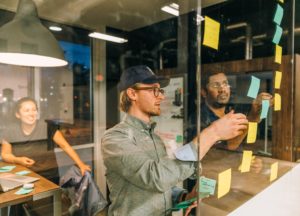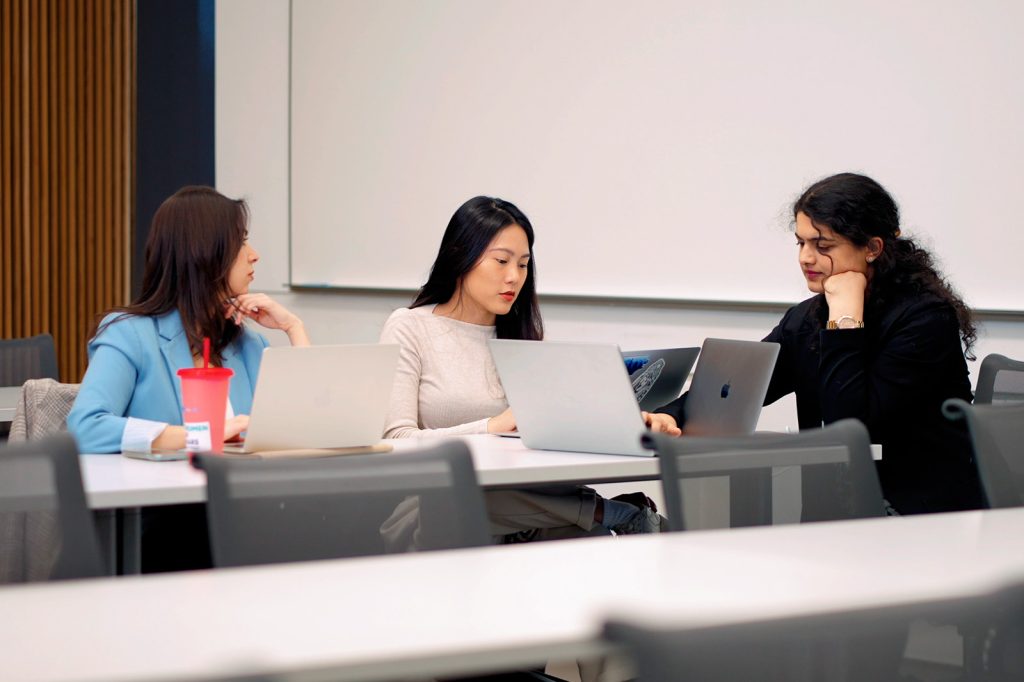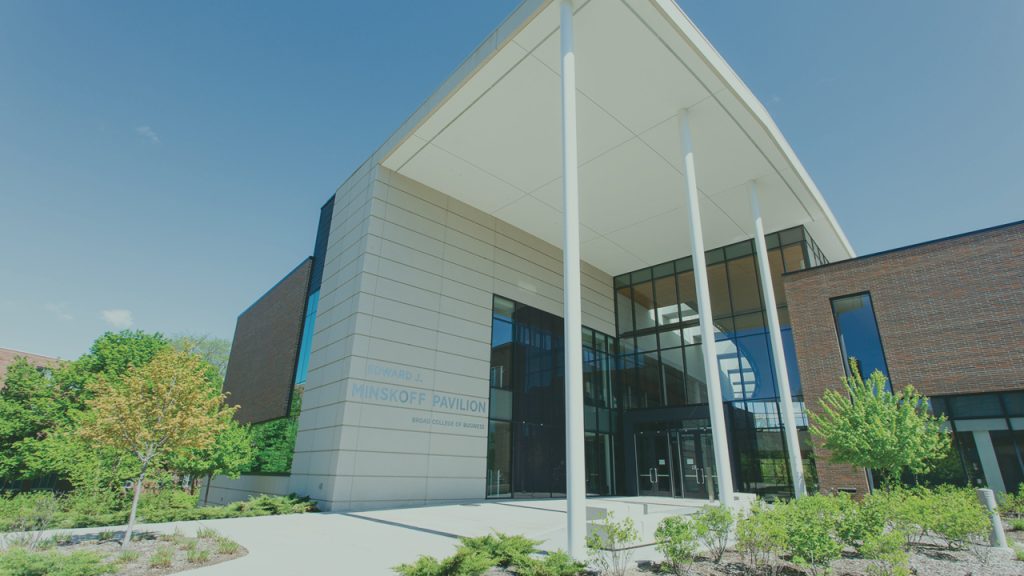After boarding a plane with eight other classmates, I was eager to experience a four-day trip to Austin, Texas, where I would be immersed in a design thinking workshop with a local design agency, Handsome. Little did I know that this experience would have such an impact on the way that I view creative problem solving.
Within the first few minutes of stepping into Handsome’s office, I had a feeling that this workshop would be a collaborative and hands-on experience, as I gazed at the open architecture with storyboards and sticky notes adorning conference rooms.
After our introduction to the guiding principles of design thinking, we were broken up into teams and tasked with solving pain points commonly faced by freelancers. This required not only plenty of secondary research but also interviews with freelancers that we sought out in local breweries and coffee shops throughout Austin.
Throughout the process of interviewing and ideating practical business solutions to solve these pain points, it became apparent that the “secret sauce” of design thinking was demonstrating the ability to empathize with individuals. By lending an empathetic ear to freelancers’ concerns, we were able to dig deeper towards the underlying cause of the pain points we were looking to solve.
As I was more used to a traditional business environment that focuses its attention on financial performance as the basis for decision making, it was refreshing yet challenging to experience a new thought process that put the consumers’ feelings above all else.
What made this process challenging was that in the business environment most familiar to me, it was commonplace to leave emotions at the door to make salient business decisions. Not to say that emotional intelligence has been a foreign concept, but I have always associated EQ with managing and leading a team, rather than using it to truly get to the root of a consumer’s problem. Here, emotions were important.
In addition to the empathy component, one of the biggest takeaways from this experience was the importance of face-to-face interactions. Through one-on-one interviews, I discovered so much more than the responses to my questions. I was able to view every mannerism someone made in response to a topic in conversation, the inflections of their voice and changes in their demeanor. Although subtle, these cues were paramount in helping us rank our possible business solutions. In a world that seems to continually isolate individuals through the advancement of technology, this experience helped reinstate the importance of face-to-face interaction on multiple levels.
The learnings that I took away from my trip to Austin have already shown their value, as I have begun to question everyday problems in a new light. Since then, I’ve been able to put a new empathetic lens on problem solving as well as think twice about the convenience of technology when compared to face-to-face interaction. I look forward to putting these insights into practice throughout my career after I graduate from Broad.





